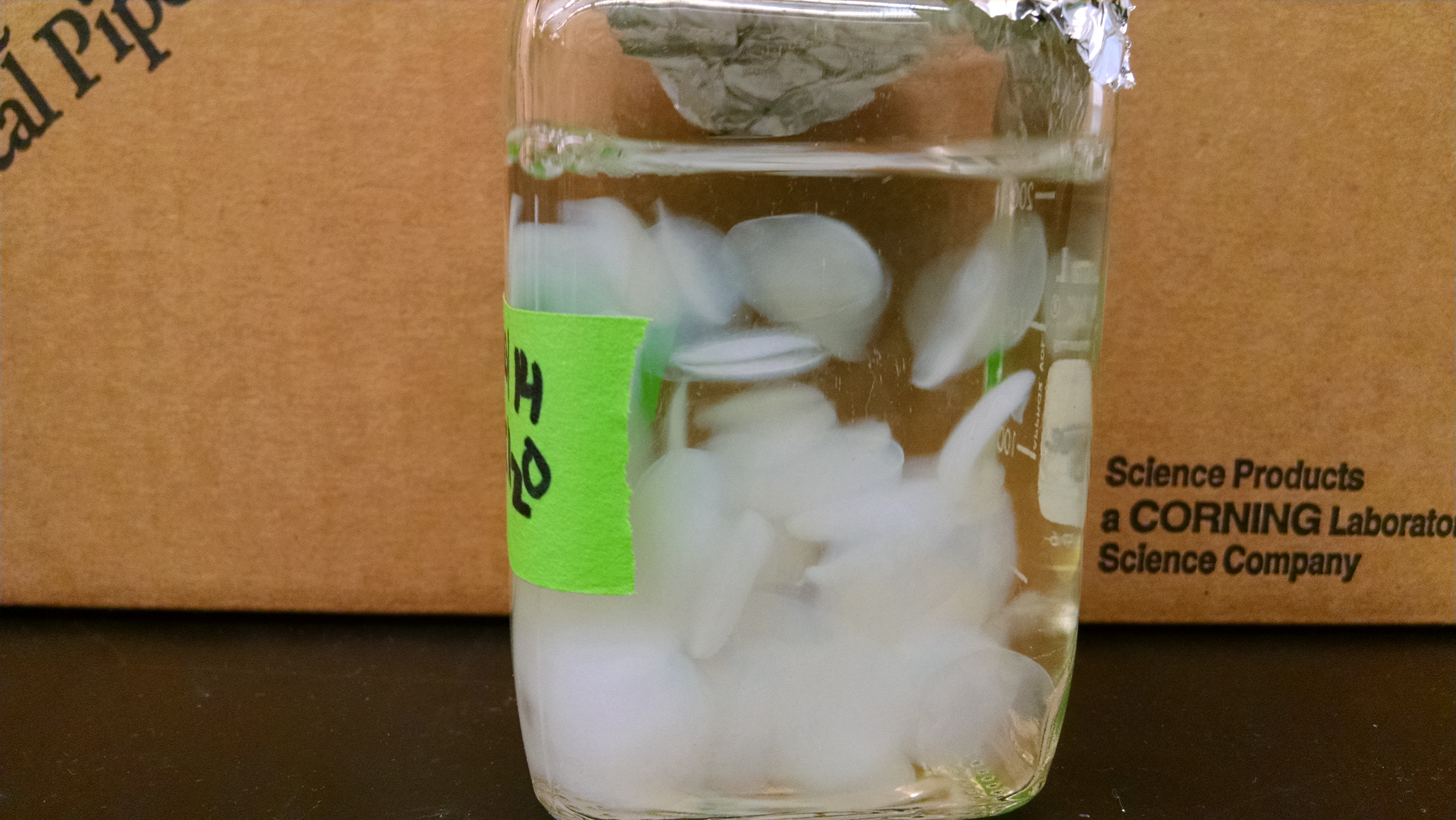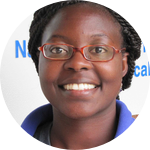About This Project
Stem cells are the body’s internal repair system with their amazing potential to replace dying body cells. Doctors have known this, injecting stem cells for treatment of wounds; however, injecting stem cell alone has decrease efficacy because they often float around the body and few reach the injury to heal the wound. Effective support for stem cell delivery would potentially improve healing time, costs, and the quality of life for many patients.Ask the Scientists
Join The DiscussionWhat is the context of this research?
Stem cells from bone marrow can form bone cells and repair damaged bone tissue. Injecting stem cells alone for treatment, however, has decreased efficacy because the cells often float around the body and very few reach the injury site to heal the wound.
We have been studying the ability of bacterial cellulose, a natural hydrogel, for bone repair. Bacterial cellulose is generated from a non-disease inducing bacterium found in nature.
Bacterial cellulose is very attractive for bone tissue repair because it can be fabricated to be chemically pure, compatible with living tissue and cost-effective. Our research has shown that we can use bacterial cellulose as a support material to allow human adult stem cells to adhere and form bone cells to replace damaged cells for bone tissue repair.
What is the significance of this project?
With an elderly population, sports related injuries and battlefield wounds, the number of severe bone injuries and diseases increase annually. These injuries are difficult and expensive challenges for medical personnel and patients.
If this project is successful, bacterial cellulose could be used as a cost effective natural material to effectively deliver stem cells to injured bone sites, heal damaged bones and improve the quality of life for these patients.
This study will also provide the fundamental biological understanding of how bacterial cellulose will deliver stem cells to heal damaged bones. A better understanding of the stem cell delivery mechanism by bacterial cellulose could contribute to the use of this stem cell-material combination for other tissue repair applications.
What are the goals of the project?
Our goals for this project are to:
(1) evaluate how effective bacterial cellulose is at delivering stem cells, and
(2) measure how well and how fast the combination of stem cell and bacterial cellulose heal bone tissue wounds compared to stem cells alone.
The experiments will be performed on rat wounds and examined after 7 and 30 days after treatment. The animal experiments will be conducted at the Division of Laboratory Animal Medicine at Northeastern University.
Various analysis including X-ray imaging will be performed to determine the extent of new bone growth on the wounds treated with bacterial cellulose-stem cell combination compared to those treated with stem cells alone.
Budget
These funds will allow us to purchase and provide care for the animals, conduct the experiments at the Division of Laboratory Animal Medicine at Northeastern University, and cover the costs of the imaging analysis that will be completed at Tufts University Animal Histology Core.
The animals will be housed and cared for at the Division of Laboratory Animal Medicine. The facility has the equipment needed to perform the animal study. Animal experimental procedures will be carried out according to an approved Institutional Animal Care and Use Committee protocol. The funding of $3,500 will provide significant impacts on the fundamental understanding of the performance of the natural cellulose materials seeded with stem cells on bone wound healing. These results will prove useful in establishing various exciting research projects geared towards using this natural cellulose material seeded with stem cells for clinical applications.
Meet the Team
Team Bio
Pelagie Marlene FaviI enjoy developing and characterizing advanced biomaterials with mammalian cells to restore normal function to injured or diseased tissues. I believe strongly that there is a great opportunity to develop bacterial cellulose as an inexpensive and effective renewable material that will not interfere with tissue healing or the regenerative process, for affordable clinical care. I also enjoy cooking African food, going on road trips and spending time with my family.
Thomas Webster
I enjoy developing environmentally safe, non-toxic materials, for use in a wide range of applications. I have completed extensive studies on the use of nanophase materials to regenerate tissues and inhibit bacterial growth. My research group takes an interdisciplinary approach to understanding, investigating, and applying new nano-biomaterials and techniques to the medical world. In the end, we are just a bunch of cool people trying to make the world a better place!
Lab Notes
Nothing posted yet.
Press and Media
Nanomedicine Lab at Northeastern UniversityWe really appreciate pledges of any amount! Thank you for your support.
Backers can follow our research news in Lab Notes.
Relevant references:
Favi P, Dhar M, Neilsen N and Benson R. Proliferation and Osteogenic Differentiation of Mesenchymal Stem Cells on Biodegradable Calcium-deficient Hydroxyapatite Tubular Bacterial Cellulose Composites. MRS Proceedings. 2014; 1621: 71-79. doi:10.1557/opl.2014.287.
Favi PM, Benson RS, Neilsen NR, Hammonds RL, Bates CC, Stephens CP and Dhar MS. Cell proliferation, viability, and in vitro differentiation of equine-derived mesenchymal stem cells seeded on bacterial cellulose hydrogel scaffolds. Material Science and Engineering C-Material for Biological Applications. 2013, 33(4): 1935-1944.
Hutchens S, Benson R, Evans B, Rawn C and O’Neill H. A resorbable calcium-deficient hydroxyapatite hydrogel composite for osseous regeneration. Cellulose. 2009, 16:887-898
Hutchens SA, Benson RS, Evans BR, O’Neill HM and Rawn CJ. Biomimetic synthesis of calcium-deficient hydroxyapatite in a natural hydrogel. Biomaterials. 2006, 27:4661-4670
Helenius G, Backdahl H, Bodin A, Nannmark U, Gatenholm P and Risberg B: In vivo biocompatibility of bacterial cellulose. Journal of Biomedical Material Research A 2006, 76A:431-438.
Iguchi M, Yamanaka S and Budhiono A. Bacterial cellulose-a masterpiece of nature's arts. Journal of Materials Science. 2000, 35:261-270.
Project Image from: http://arthritis.about.com/od/arthritisbyanatomy/ss/causejointpain_4.htm
Additional Information
Picture of bacterial cellulose, a soft and jelly-like material. It feels like Jell-O to the touch, but it is stronger than Jell-O. This bacterial cellulose has been completely cleaned. It is free of any impurities and stem cells can be added to it for bone tissue healing studies.
Picture of many discs of clean and pure bacterial cellulose in water.

Bacterial cellulose can be grown into various shapes and sizes. They can be made as small as a bead or as wide as a laptop. Pictured here are large strips of bacterial cellulose. We initially made large bacterial celluloses, the size of a laptop, and then cut them into strips for our study.

Picture of stem cells grown on bacterial cellulose. Here, the cells were made to turn into bone cells. This type of staining will stain red when the cells are positively bone cells.

Project Backers
- 13Backers
- 13%Funded
- $455Total Donations
- $35.00Average Donation

